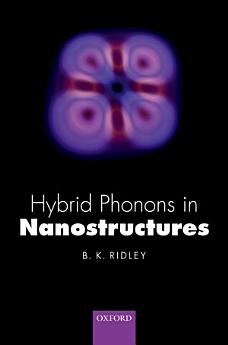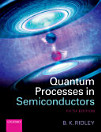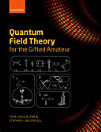Hybrid Phonons in Nanostructures
Mar 2017 · Series on Semiconductor Science and Technology Book 20 · Oxford University Press
3.0star
1 reviewreport
Ebook
160
Pages
family_home
Eligible
info
reportRatings and reviews aren’t verified Learn More
About this ebook
The book provides a technical account of the basic physics of nanostructures, which are the foundation of the hardware found in all manner of computers. It will be of interest to semiconductor physicists and electronic engineers and advanced research students. Crystalline nanostructures have special properties associated with electrons and lattice vibrations and their interaction. The result of spatial confinement of electrons is indicated in the nomenclature of nanostructures: quantum wells, quantum wires, quantum dots. Confinement also has a profound effect on lattice vibrations. The documentation of the confinement of acoustic modes goes back to Lord Rayleigh's work in the late nineteenth century, but no such documentation exists for optical modes. It is only comparatively recently that any theory of the elastic properties of optical modes exists, and a comprehensive account is given in this book. A model of the lattice dynamics of the diamond lattice is given that reveals the quantitative distinction between acoustic and optical modes and the difference of connection rules that must apply at an interface. The presence of interfaces in nanostructures forces the hybridization of longitudinally and transversely polarized modes, along with, in polar material, electromagnetic modes. Hybrid acoustic and optical modes are described, with an emphasis on polar-optical phonons and their interaction with electrons. Scattering rates in single heterostructures, quantum wells and quantum wires are described and the anharmonic interaction in quantum dots discussed. A description is given of the effects of dynamic screening of hybrid polar modes and the production of hot phonons.
Ratings and reviews
3.0
1 review
About the author
Brian K. Ridley gained his B.Sc. in physics from University of Durham in 1953, and later his Ph.D. on colour centres in the alkali halides in 1957. He worked at the Mullard Research Laboratory, Redhill, 1956-1964; before moving to the Department of Physics at the University of Essex, 1964-present. He has been a Full Professor from 1984, Research Professor from 1991-2007, and Professor Emeritus from 2008. He also holds Visiting appointments at Cornell,Stanford, Lyngby, Princeton, Lundt, Santa Barbara, Hong Kong. He was elected Fellow of the Royal Society in 1994, awarded the Paul Dirac Prize and Medal in 2001 by the Institute of Physics, and awarded Prize of the HCIS International Conference, Modena, in July 2003.
Rate this ebook
Tell us what you think.
Reading information
Smartphones and tablets
Install the Google Play Books app for Android and iPad/iPhone. It syncs automatically with your account and allows you to read online or offline wherever you are.
Laptops and computers
You can listen to audiobooks purchased on Google Play using your computer's web browser.
eReaders and other devices
To read on e-ink devices like Kobo eReaders, you'll need to download a file and transfer it to your device. Follow the detailed Help Center instructions to transfer the files to supported eReaders.








